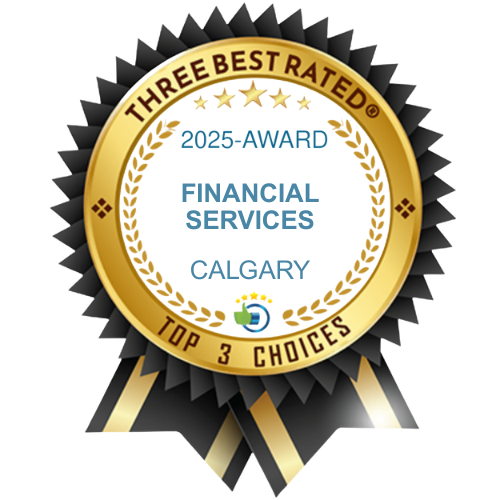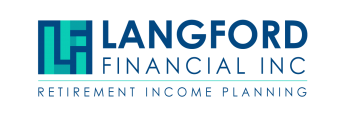Are CPP Contributions Worth It for the Incorporated Business Owner?
A Case Study in the Cost/Benefits Analysis of business owners making CPP Contributions
Current Situation with new 2021 numbers
The CPP program is a pension plan that was created in 1966 as a co-contributory plan between employers and employees. It is run by an independent pension board at arm's length from the government. It is a mandatory plan and contributions are required on earned income from the ages of 18-70. A business owner is considered both an employer and employee and therefore required to pay both contributions. This is the case for sole proprietors.

Employer/Employee Match: 5.45% by each up to the maximum yearly pensionable earnings of $61,600 for 2021. No contributions are required on the first $3500 of earned income.
2021 Employer portion: $2564/annually ($61,600 - $3500 = $58,100 X 5.45% = $3166.45)
2021 Employee portion: $3166.45/annually
Total cost to the business owner is $6,332.90 per year.
Here's the problem:
The contribution percentage is going to increase in 2022 to 5.7% and then increase again in 2023 to 5.95%. It will then stay at that level for a while. Along with the increase in the rate, there is an increase in the pensionable earnings on which you pay the rate. In 2021 the earnings amount you pay CPP on is going from $58,700 to $61,600 - that's an increase of $2900. This is the largest increase since 1966. As a business owner, you are going to be putting in more and more money every year to maintain this plan. Should you be looking at other alternatives for creating retirement income?
How are the CPP benefits calculated?
The benefit is based on years of contributions between the age of 18 and 65. The benefit is then calculated based on the employee's best 39 years of contributions. Canadians can optionally take CPP as early as age 60, in which case the benefit is based on your top 35 years of contributions. There will be a reduction in benefits of .6% per month for each month you take it early. You can also choose to delay receipt of CPP for an increase to your benefit of .7% per month for each month you delay up to age 70. If you have 39 years of maximum contributions then there is no need to delay taking CPP.
CPP income is fully taxed at your personal tax rate.
The benefit to an employee at age 65. The maximum CPP benefit in 2020 is currently $1,175.83/month or $14,109.96/year.
Cost:
If a business owner were to make maximum contributions going forward from 2021 they would pay $6,332.90 each year for the next 39 years. Indexed at 1% that would total: $303,259 of deposits. (The index is set by CRA each year) CPP contributions are required from age 18-70.
Benefit:
$14,109/year CPP indexed for life. ($303,259 divided by $14,109 = 21.5 years to break even or age 86.5.
Alternatives:
If the business owner invested the same annual payment of $6332 inside the corp indexed at 1% with a 5% rate of return annually over 39 years the amount is $303,259 of deposits and $527,000 of growth, for a total account size of $830,000. Taking the same CPP amount of $14,109 per year as a pension the money would last for 50 years or more.
On a systematic basis, the business owner could take $2200 per month indexed at 1% with an annual rate of return of 5% for 30 years with minimal risk that they will ever run out of money.
Effects of taxation
The above scenario does not show the impact of taxation and assumes no taxation on investment dollars. The CPP contributions are not taxable for the corp before-tax dollars. The alternative investment is after-tax dollars and the annual gains are also taxable whether realized or unrealized gains.
Let’s assume an 11% corporate tax amount in Alberta. In order to invest $6332 per year the business would have to earn a pre-tax amount of $7114. The taxes paid would be $782.61 each year. If you paid that for 39 years the taxes payable would be $30,521, without calculating any indexing.
It is difficult to compute the annual taxable situation because the gains are taxed differently in regards to interest, capital gains, or dividends. There are also realized and unrealized gains that need to be factored in. Remember you could have as much as $527,000 or more of taxable investment growth. Also, passive income inside a corp also has an impact on lifetime capital gains exemption rules upon the sale of the business. Check with your accountant to see if and when a holding company is advisable.
The above case study is not fully computing the impact of the new CPP rules that began to take effect in January 2019; which will see a 5-year phase-in of increased CPP contributions from 4.95% to 5.95% required from the employer and employee. The CPP benefit is also going to increase over time.
Another alternative idea
Take a dividend or T4 income in the amount of $6000 each year and pay the taxes now and use it to max out your TFSA (tax-free savings account). Then use the TFSA as your CPP replacement. The TFSA has no more tax consequences in regards to growth or withdrawals.
The TFSA does not produce a tax deduction savings in the year of contributions like an RRSP will. If you have RRSP contribution room, then it would be a good idea to maximize the RRSP strategy and use up the contribution room you have first before looking at other alternatives.
One last option is to use a corporately owned insurance policy to grow cash value on a tax-sheltered and tax-advantaged basis. Depending on the size of your business and tolerance for complexity there are numerous options available to you other than the T4 income and CPP contributions.
Key FACTORS in determining your decision:
1.) Taxation. If you decide to go with an alternative investment focus on investment, within the corp, that have the best chance for capital gains, then dividends, and avoid interest altogether. The Corporate Retirement Strategy using permanent life insurance could be a more tax-efficient way to get a similar outcome. However, you have to be insurable.
2.) Passive investments inside a corp can have an impact on your lifetime capital gains exemption at the time of sale, they also have an impact on your small business deduction rate. Check with your accountant or tax professional.
3.) If there are multiple business owners (active shareholders) this may not be an option. It’s a better option for a single business owner.
4.) T4 income produces RRSP contribution room, but T5 income (dividends) do not.
5.) CPP contributions and the subsequent benefit has no estate value. If you die before you collect, no one gets it. There is a provision for survivor benefits, but it is rather limited. An alternative investment, in its entirety, is available for your beneficiaries to enjoy.
6.) If you only have a few years to retirement and you have been paying maximum contributions into CPP for many years then it may be best to continue on the program. Your decision needs to be weighed as to the pros and cons.
7.) If you already have 39 years of maximum contributions to CPP, you are wasting your money, as you CANNOT get any more than you will already get.
Mistakes to avoid in business retirement planning
1.) Not having a plan.
Too many business owners choose T5 dividend income and have no alternative investment for retirement planning. Eventually, they will realize that they have no CPP, but it will be too late - you cannot buy back time. CPP is not a tax, it’s a pooled retirement plan run by an independent ‘arms-length’ investment board, separate from the government.
2.) Not all corporations have any 'resale' value.
Many business owners choose a corporate structure thinking they are saving on taxes - it’s just not the case. The integration of the tax system has been created so that a dollar earned is taxed equally. One of the benefits of incorporation is deciding when to take income and controlling how much income you take in any given year.
For example, let's say you own real estate that you would like to sell and you know there will be a significant capital gain when you sell. If your business is incorporated you can choose to not take any income from the Corp. in a particular year so that you can “realize” your gain and keep your taxes payable lower for that specific tax year. If you were an employee or a sole proprietor you do not have that option as you have to declare all of the income you earn in the year that you earn it.
3.) Not getting any advice can lead to a lot of mistakes and problems. Take the time to explore your options and get the proper advice for your situation.
Book a meeting in our calendar below to get started with setting up a retirement plan for yourself and your employees or to explore one of the alternatives in this case study. We can work with you and your accountant to come up with the best structure for you.
Learn more about our Flat-fee & All-inclusive Retirement Income Planning Services for those 55+
Talk to an Expert - book a zoom or phone call to ask specific questions. The cost is $150.
Willis J Langford BA, MA, CFP
Nancy Langford CRS
587-755-0159







